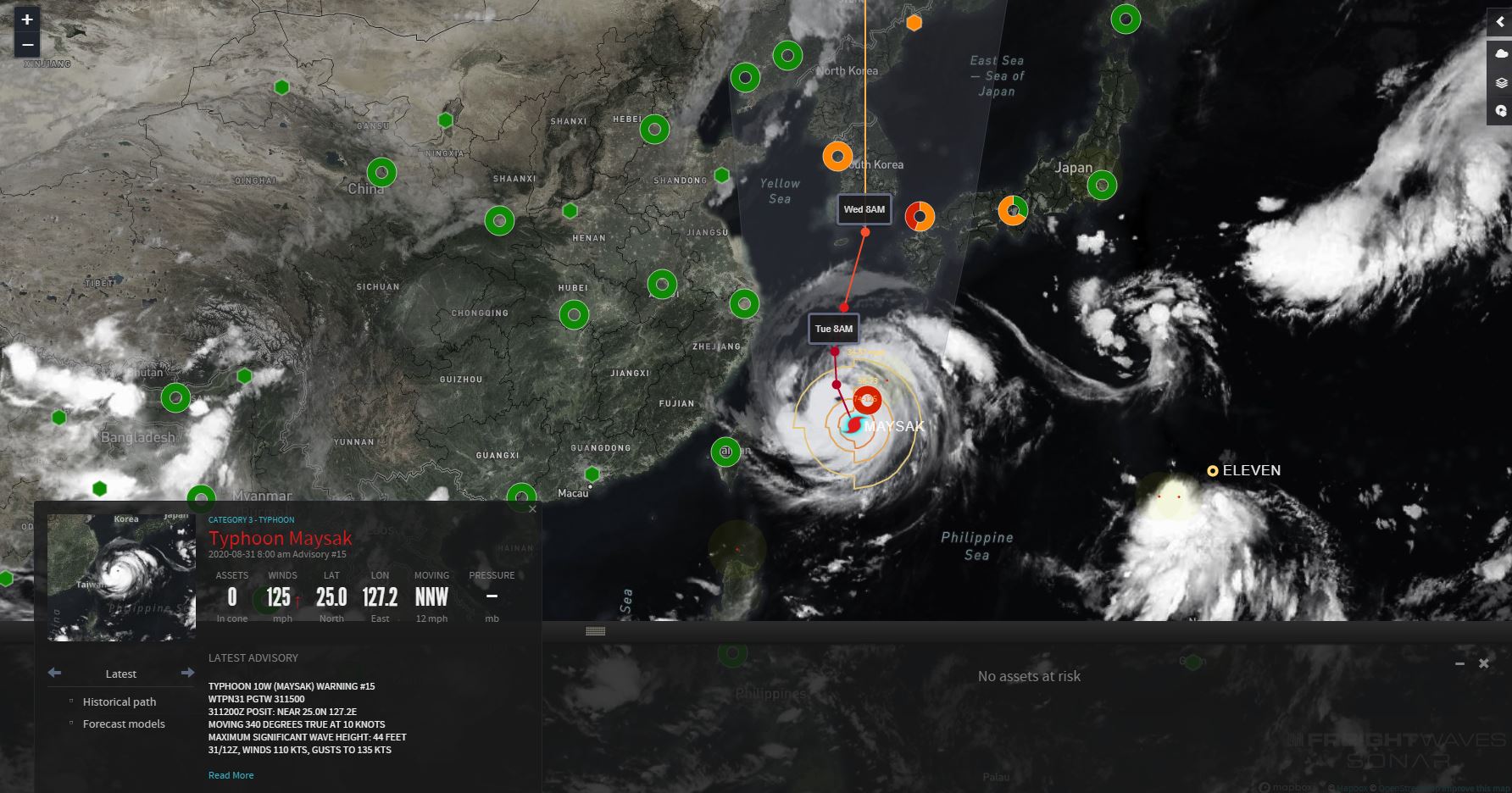Now that the tropical Atlantic is fairly quiet, focus is shifting to the western Pacific, where a strong typhoon could soon disrupt a major global freight market.

Typhoon Maysak is spinning near eastern Asia and became stronger Sunday night. It was producing sustained winds of 125 mph as of 8 p.m. Korean Standard Time (KST) Monday (8 a.m. EDT). That’s as powerful as a Category 3 major hurricane.
Based on sea surface temperatures (SSTs) and minimal wind shear, Maysak’s winds could be almost 140 mph as it brushes by the small southern islands of Japan Monday night and Tuesday, followed by gradual weakening.
The latest forecasts show Maysak making landfall Wednesday just west of Busan Port in South Korea.
Busan is a major global freight market. The World Shipping Council ranks it as the sixth-busiest container port in the world, handling 21.66 million twenty-foot equivalent units (TEUs) in container volume during 2018. Busan Port’s TEU volume increased each year from 2014 through 2018.
Busan’s Gimhae International Airport (ICAO code: RKPK) also handles a large amount of air cargo.
Maysak’s force will likely decrease before impact, but winds could still be as strong as 100 to 110 mph at landfall. Timing of the eyewall replacement cycles, along with stronger wind shear and the mountainous terrain of South Korea and southwestern Japan, will help determine how quickly Maysak weakens. Eyewall replacement cycle occurs when a new eye begins to develop around the old eye, and the new eye gradually decreases in diameter. When an eyewall replacement cycle occurs, the intensity of the tropical cyclone usually decreases.
Maysak could cause moderate to major freight disruptions in Busan due to destructive winds and storm surge at the coast. Rainfall totals of 4 to 8 inches, with isolated higher amounts, could cause flash flooding, mudslides and potential roadblocks.
Disruptions in transportation — road, air, rail, port and shipping — will be moderate to major in and around Busan. The disruptions will be due to widespread power outages, as well as areas of flash flooding which could lead to mudslides and roadblocks. The disruptions will likely last one to three days but could last longer depending on the typhoon’s intensity and duration over the region.
Due to disruptions to the freight market from Hurricane Laura, FreightWaves is providing free access to key features of SONAR through Friday, Sept. 4. Click here to learn more.


